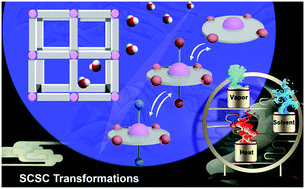The effect of coordinated solvent molecules on metal coordination environments in single-crystal-to-single-crystal transformations
Abstract
Single-crystal-to-single-crystal (SCSC) transformation has been demonstrated to provide an ideal platform to explore the formation process of chemical bonds, which is conducive to making function-oriented crystal synthesis a reality. A solvent as a ligand or a structure-directing agent plays a significant role in the structural formation of coordination polymers (CPs), and its removal/adsorption or exchange can affect the change in metal coordination environments. In this article, we provide a brief overview of recent progress in the effect of coordinated solvent molecules on metal coordination environments of CPs in SCSC transformations. We highlight three different categories based on their stimuli conditions, heat treatment, immersion in solvent or mother liquid, and exposure to vapor. We try to discuss the criteria for CPs in which the metal coordination spheres can be affected by the coordinated solvents, which may provide new insights into the rational design and construction of CPs with the desired structures and properties.

- This article is part of the themed collection: 2020 Highlight article collection


 Please wait while we load your content...
Please wait while we load your content...